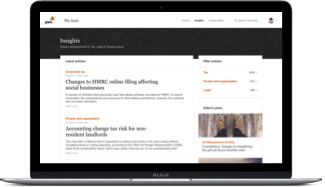PwC’s Asset Management Tax Conference saw delegates discuss the increasing pressures on asset managers in response to tax and regulatory requirements and the consequent evolution of the tax function in a modern asset management firm. Their conclusion? The tax function of the future will look very different.
With asset managers operating in uncertain times, the pressures on their tax functions are set to increase. Moreover, this squeeze will be felt in different contexts: not only are investors looking for more bespoke and tax-efficient services, particularly given the detailed information they are now providing through know-your-customer processes, but also regulators and tax authorities are becoming more demanding.
These trends are heading in only one direction. PwC’s Asset Management 2020 report predicted that for asset managers to be successful in certain markets, they will need to put more boots on the ground and invest in local operations. This is likely to give asset management firms a greater exposure to local tax authorities. As the country-by-country-reporting regime (CBCR) intensifies, with data becoming visible to tax authorities over the next 12 months, increased questions and enquiries from tax authorities are likely to require more time and resources. The CBCR rules could expose asset managers to increased public scrutiny and reputational risk – tax must play its part in helping asset managers to avoid such damage, managing internal and, increasingly, external stakeholders with the utmost care.
The list of issues is getting longer and longer – from the greater transparency required under MIFID II to the demands of financial transactions taxes, asset management tax functions will have to work ever harder than ever to both ensure compliance and generate value for investors. Standing still, in other words, is not an option for the tax function. To survive and succeed, tax managers and the broader tax function will need to develop new skills – they will have to ensure the lights stay on while managing change with agility. In practice, that will require five key changes.
Too many organisations, including many asset managers, are struggling to incorporate tax in their wider business strategy. The challenge for the tax function is to work harder to understand what the business as a whole is trying to achieve – and then to focus on how tax can contribute.

